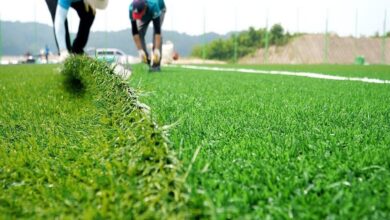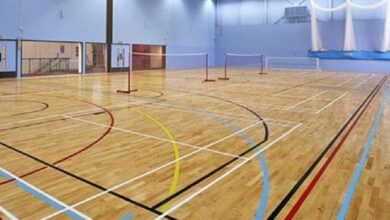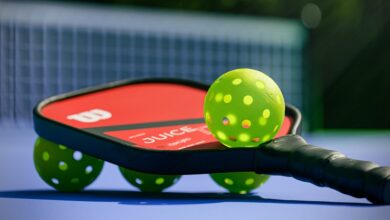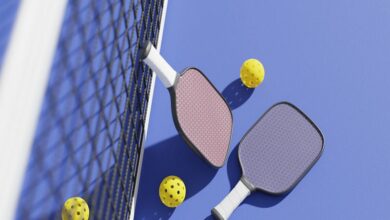Mastering the Art of Pickleball Doubles Rules and Strategies
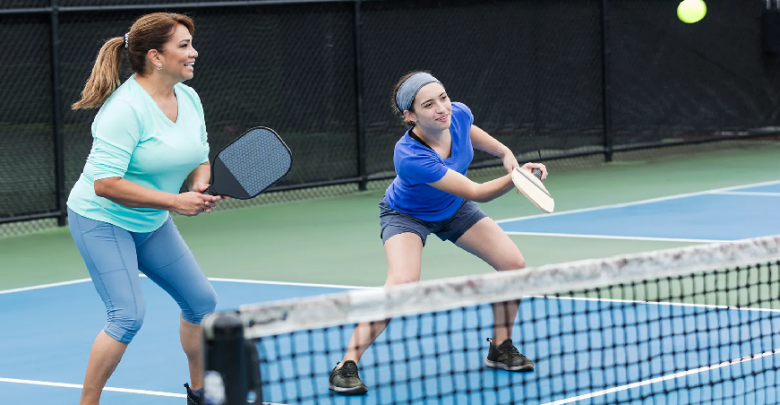
Introduction
Pickleball, a sport that combines elements of tennis, badminton, and table tennis, has taken the world by storm, attracting players of all ages. One of the most popular formats in pickleball is doubles play, which adds an extra layer of strategy and camaraderie to the game. In this article, we will explore the rules and strategies that govern pickleball doubles, helping both novice and experienced players to excel in this exciting format.
Pickleball Doubles: The Basics
Doubles pickleball, as the name suggests, involves two teams, each consisting of two players. The court dimensions are the same as for singles play, measuring 20 feet wide and 44 feet long for doubles. A net divides the court into two equal sides, and the game is typically played to 11 points, with the winning team needing to win by at least 2 points. Let’s delve into the rules that govern pickleball doubles and strategies for success.
Rules of Pickleball Doubles
Serve Rules:
- The team that serves first in a game is determined by a coin toss.
- The serving team must designate who will serve first and announce the score.
- The serve must be made diagonally across the net and land in the receiver’s diagonal service court.
- The server must stand behind the baseline and serve underhand.
- The serve receiver must let the ball bounce once before hitting it.
- The receiving team can choose which player will receive the first serve.
- Points are scored only by the serving team.
Double Bounce Rule:
- The serving team must allow the return of serve to bounce before hitting it.
- The receiving team must also let the serve bounce before hitting it.
- After the two bounces, the ball can be volleyed (hit in the air) by either team.
Read More: 10 Best Multi Sports Holiday Camp Activities for Kids
Volley Zone (Kitchen):
- The non-volley zone, also known as the kitchen, is a 7-foot area on both sides of the net.
- Players may not volley (hit the ball in the air) while they are standing in the kitchen.
- Players must have both feet behind the kitchen boundary to avoid foot faults.
Faults:
Common faults include not serving within the diagonal lines, not allowing the ball to bounce before hitting it, stepping on the kitchen boundary, and volleying from the kitchen.
Rotation Rules:
In pickleball doubles, players rotate positions on the serving team after each side-out, with the player who served the previous point moving to the non-volley zone (kitchen) until they win another point.
The receiving team does not rotate positions.
Strategies for Success in Pickleball Doubles
Effective Communication:
Communication is key in doubles play. Teams should establish a clear system for calling shots and deciding who will take specific balls. Clear and concise communication can prevent confusion and errors.
Cover the Court:
To ensure that no area of the court is left undefended, both players should work together to cover the court effectively. Move as a unit and avoid leaving gaps that opponents can exploit.
Volleying Skills:
Developing solid volleying skills is crucial in doubles. Well-placed volleys can put pressure on the opponents and keep them on the defensive. Practice your soft and hard volleys to control the pace of the game.
Serve Placement:
A well-placed serve can set the tone for the entire point. Aim for the opponent’s weaker side or body to limit their options for an effective return.
Transition to the Kitchen:
Transitioning from the baseline to the kitchen is a critical aspect of pickleball doubles. Knowing when to move forward and take control of the kitchen is essential. Typically, players move up to the kitchen when they have the advantage in the point.
Avoid Unforced Errors:
Minimize unforced errors, such as hitting the ball into the net or out of bounds. Consistency is key, so aim for consistent, controlled shots that keep the ball in play.
Mix Up Your Shots:
Keep your opponents guessing by using a variety of shots. Mix in dinks, drives, and lobs to disrupt the rhythm of your opponents.
Adapt to Your Opponents:
Pay attention to your opponents’ strengths and weaknesses and adjust your strategy accordingly. If they have a weak backhand, target that side. If they are aggressive, play defensively when necessary.
Stay Positive and Supportive:
Maintain a positive attitude and support your partner. Doubles play can be mentally challenging, and maintaining a good rapport with your teammate is essential for success.
Conclusion
Pickleball doubles is a dynamic and engaging format of the sport, demanding not only physical skills but also effective communication and strategy. Understanding the rules and practicing sound tactics can make a significant difference in your performance on the court. Whether you’re playing pickleball for fun or in a competitive setting, doubles offers a unique opportunity to collaborate with a partner and experience the joys of teamwork. By mastering the rules and honing your strategies, you’ll be on your way to becoming a formidable pickleball doubles player.

